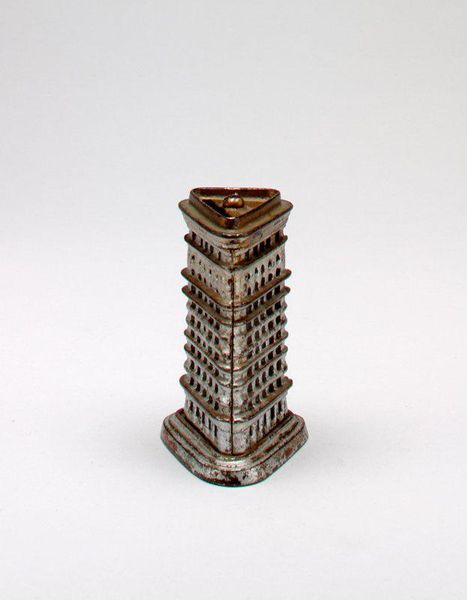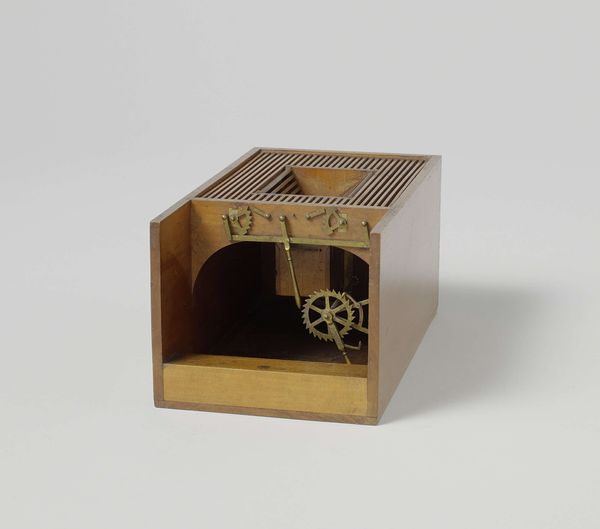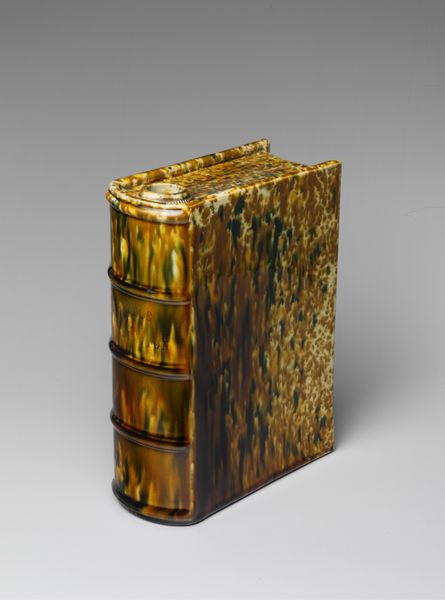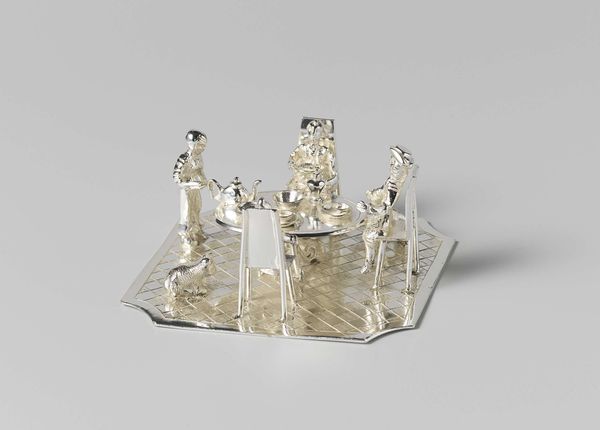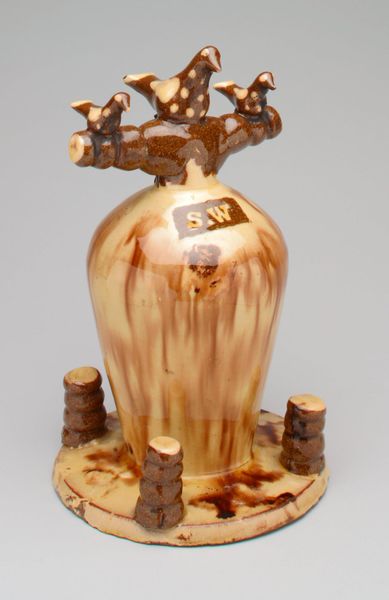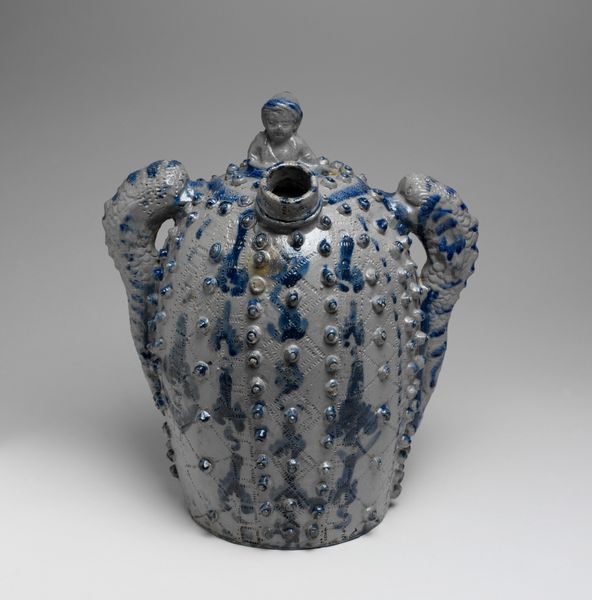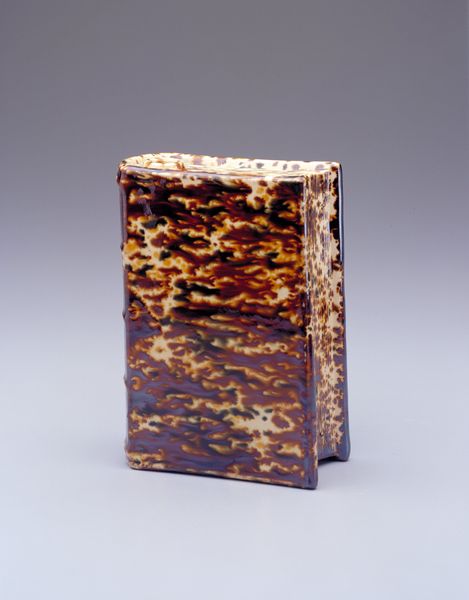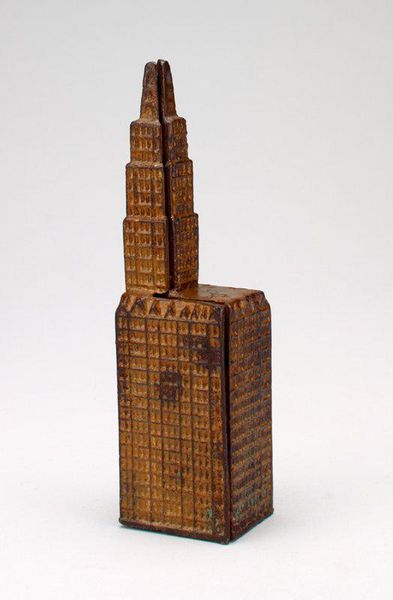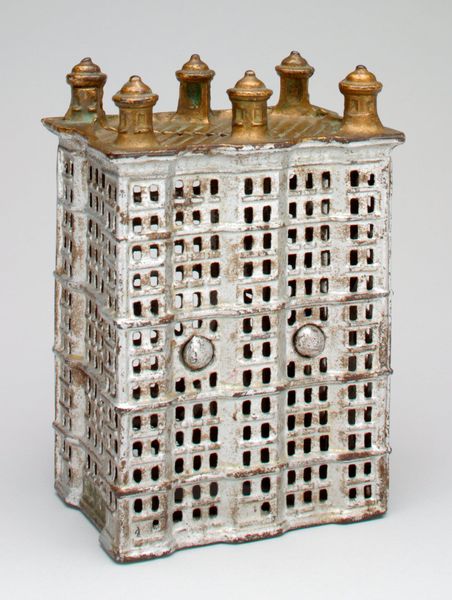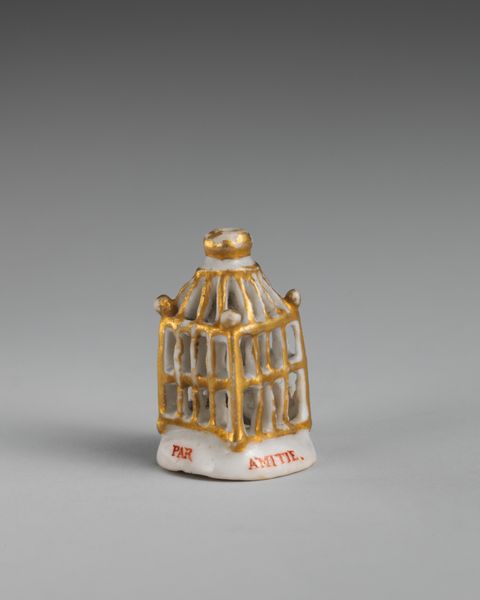
ceramic, earthenware
#
folk-art
#
war
#
ceramic
#
earthenware
#
folk-art
#
decorative-art
Dimensions: H.: 13.3 cm (5 1/4 in.)
Copyright: Public Domain
Curator: Just look at this earthenware bank, likely crafted around 1850. Doesn't it just evoke a sense of the past? Editor: It's rather charming, though a bit rough-hewn. The color palette gives it a somber feel, like a building weathering through long, harsh winters. I immediately wonder about the hands that shaped it. Curator: These banks, particularly from the mid-19th century, are fascinating artifacts. Often associated with folk art traditions, they speak to evolving economic systems and the rise of a savings culture amongst common people. Before formalized banking institutions were widely accessible, objects like these played a crucial role in encouraging thrift. Editor: The imagery of a house feels loaded here. A house as a symbol of shelter, family, the future. Making a house the object to safeguard money – were people aware of this symbolic connection, investing not just in currency but the dream of stability and home? Curator: It’s entirely plausible. While we don’t know the specific maker of this piece, its existence points towards larger societal trends. Banks such as these would appear in different forms across different social strata—we can even understand its design as a comment on how the ideals of home ownership circulated. Editor: Consider also the presence of war themes in folk art around that time. Perhaps people equated savings with resilience, building their own miniature financial fortress to protect against the uncertainties of war. Curator: That's a compelling angle, and this was certainly a turbulent period in many parts of the world. Viewing the bank as a response to wider socio-political events adds another layer of depth. Editor: Seeing how form follows the human psyche helps me understand how something so ordinary became endowed with so much psychological value. I’ll think about that for quite some time, I suspect. Curator: Yes, seeing how socio-cultural realities impact something as personal as one’s savings offers a richer understanding of 19th century culture as a whole.
Comments
No comments
Be the first to comment and join the conversation on the ultimate creative platform.

